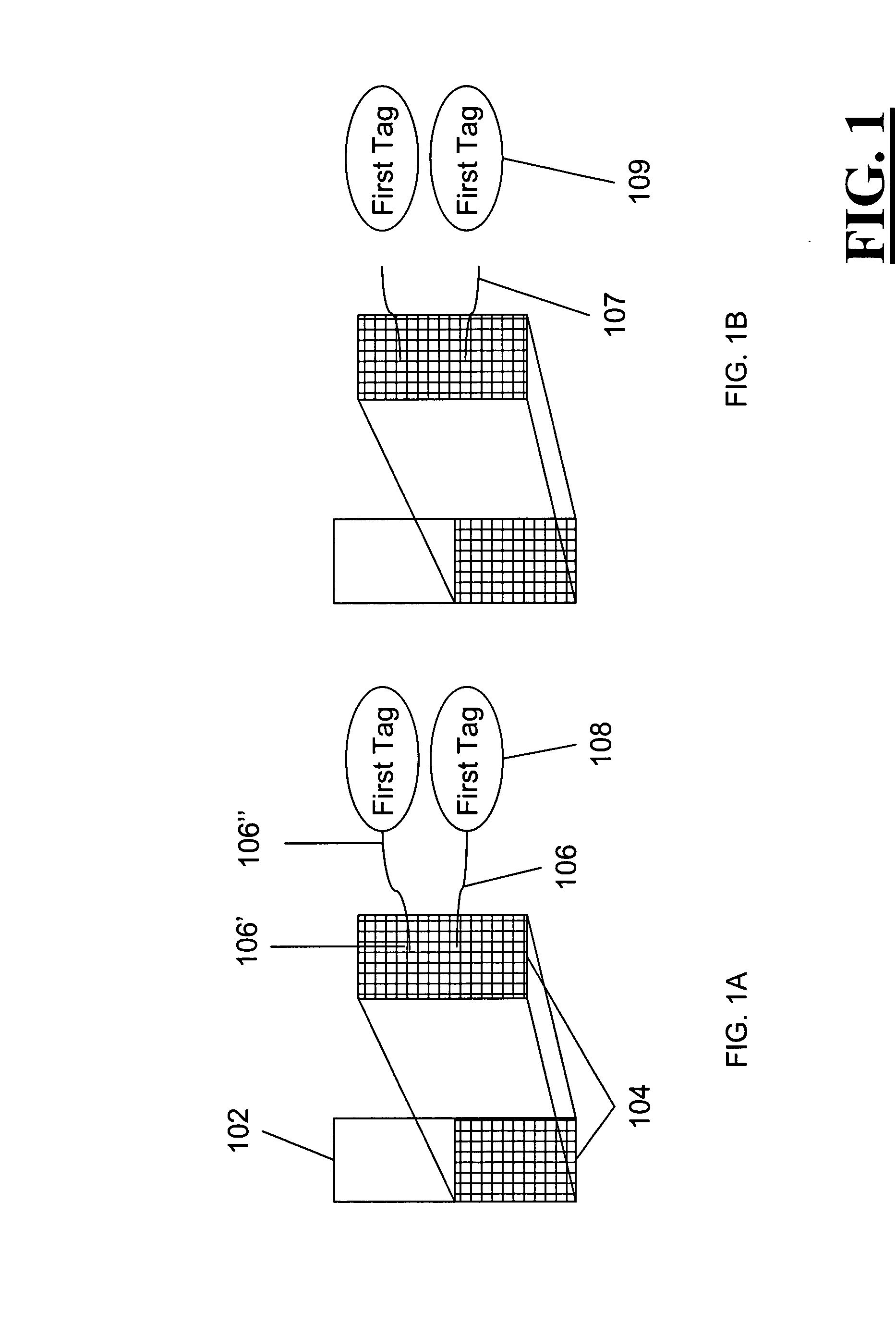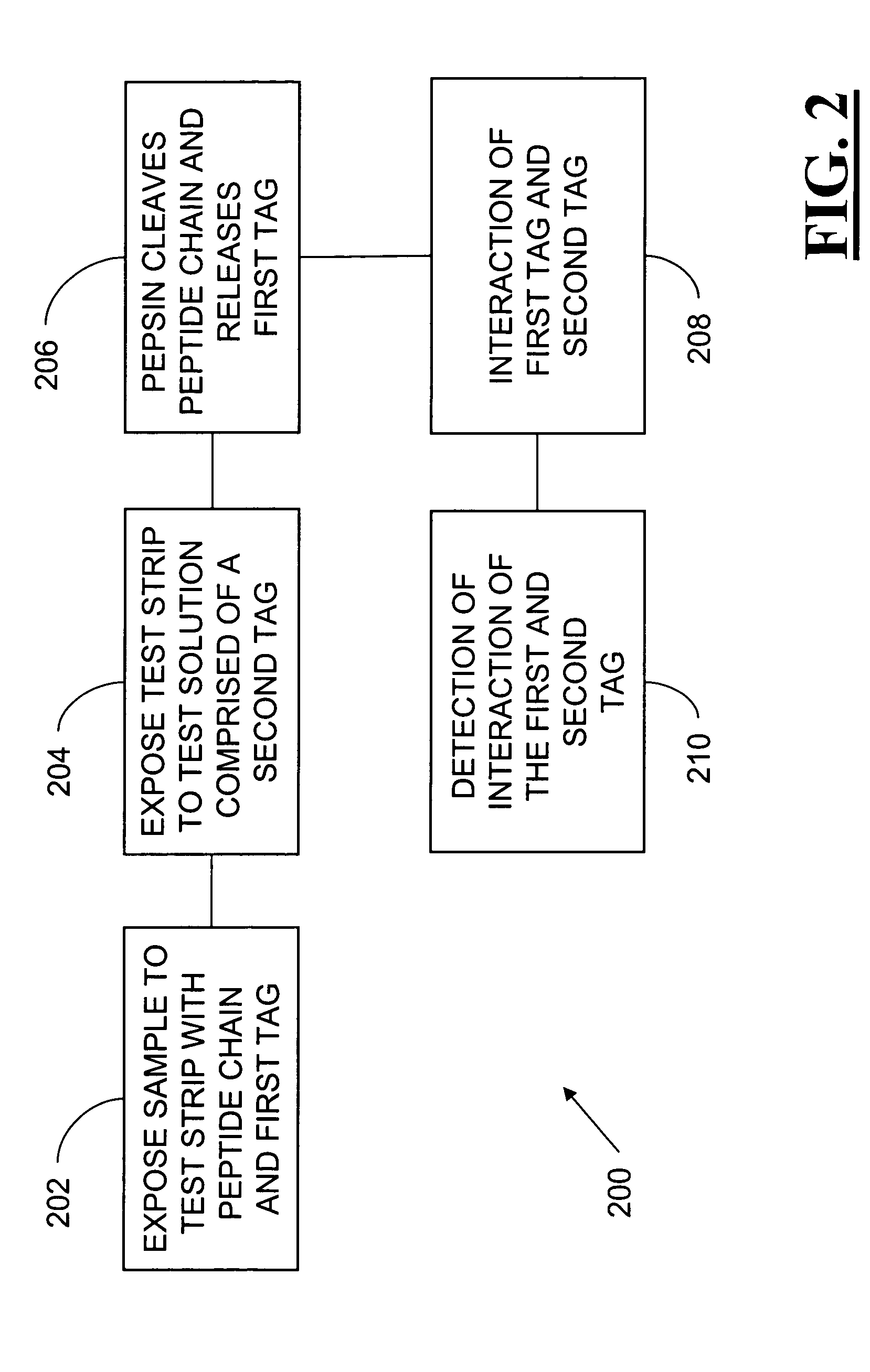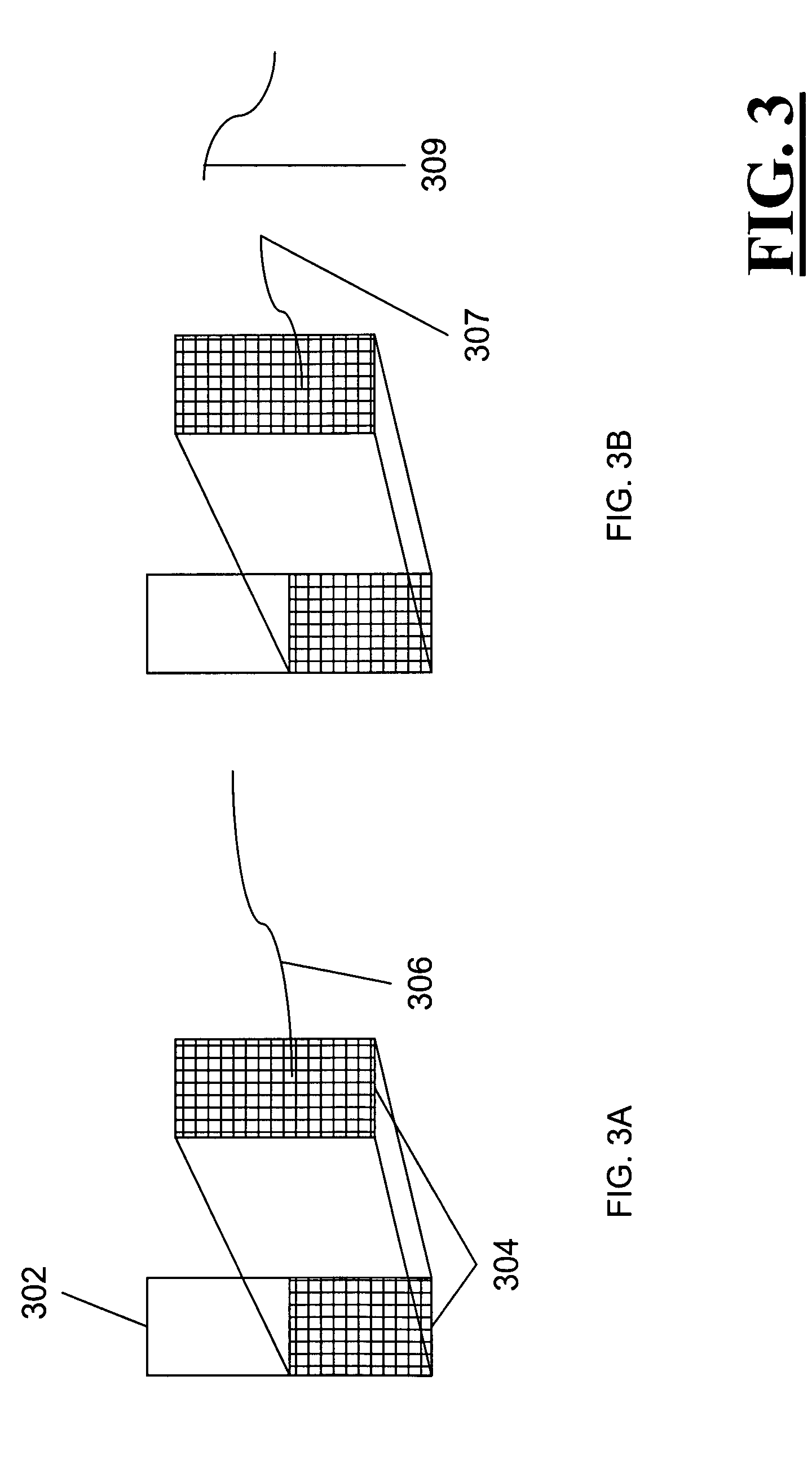Method and apparatus for the detection of an enzyme
a technology of enzymes and detection methods, applied in biochemistry apparatus and processes, biomass after-treatment, specific use bioreactors/fermenters, etc., can solve the problems of difficult to properly diagnose gerd, deficient testing procedures, and relative little data supporting the efficacy of lifestyle modification alone for the treatment of gerd
- Summary
- Abstract
- Description
- Claims
- Application Information
AI Technical Summary
Problems solved by technology
Method used
Image
Examples
Embodiment Construction
[0037]FIG. 1 illustrates one embodiment of the invention wherein pepsin is detected in a sample (for example, in a human saliva sample) using chemical tags. In one embodiment, a test strip 102, a substrate, a solid support, a stationary phase, or other immobilizing agent is used. In the embodiment shown in FIG. 1, test strip 102 is comprised of testing area 104. Disposed on the surface of testing area 104 is a multiplicity of peptide chain 106. In one embodiment, peptide chain 106 contains an aromatic amino acid residue such as phenylalanine, tyrosine, tryptophan, histidine, and the like, which is operatively configured to be cleaved by enzymatic hydrolysis of the peptide bond by pepsin. A first end 106′ of peptide chain 106 is attached to the testing area 104. A second end 106″ of peptide chain 106 is attached to a first tag 108. Upon enzymatic cleavage of peptide chain 106 by pepsin (forming cleaved peptide chain 107), first tag 108 is released to form released first tag 109. Thus...
PUM
 Login to View More
Login to View More Abstract
Description
Claims
Application Information
 Login to View More
Login to View More - R&D
- Intellectual Property
- Life Sciences
- Materials
- Tech Scout
- Unparalleled Data Quality
- Higher Quality Content
- 60% Fewer Hallucinations
Browse by: Latest US Patents, China's latest patents, Technical Efficacy Thesaurus, Application Domain, Technology Topic, Popular Technical Reports.
© 2025 PatSnap. All rights reserved.Legal|Privacy policy|Modern Slavery Act Transparency Statement|Sitemap|About US| Contact US: help@patsnap.com



